Mahjong - An Essential Guide
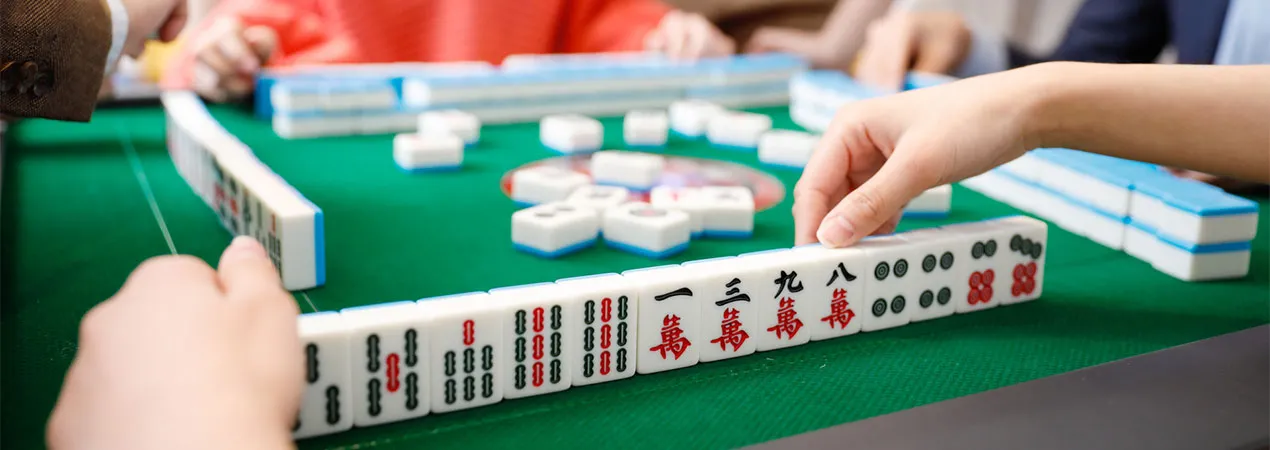
One of the most popular games that is played in China is mahjong (麻将 májiàng). A popular saying goes like this "Of all the one billion Chinese people, 900 million are playing mahjong, while the other 100 million are watching it" (十亿人民九亿麻,还有一亿在观察 shí yì rénmín jiǔ yì má, hái yǒu yī yì zài guānchá). This game is now played all over the world. It is the favorite pastime for many Chinese. It is also very common for people to play mahjong during festivals or celebrations like birthdays or at wedding banquets.
Mahjong: a mind sport
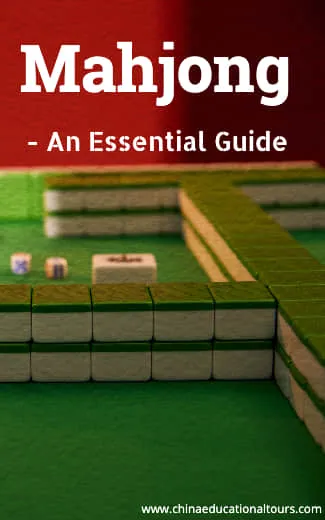
What is Mahjong?
It is known as 麻雀 máquè or 'sparrow game' in some areas in China, which is played with sets of tiles. Four players play the game using numbered tiles, which were made of bamboo or bone in the past, but nowadays they are made of plastic. In all, there are 144 tiles, of which 36 tiles are in the bamboo suit, 36 in the circle suit, 36 in the character suit, 16 wind tiles, 12 dragon tiles, and 8 bonus tiles (4 flowers and 4 seasons). Like many popular games, mahjong has many regional variations. In northern China, there are no flower and season tiles, they just have the 136 tiles. In Sichuan Province, they do not use the wind tiles and dragon tiles, therefore they have only 108 tiles.
History of Mahjong
There are many theories and legends about mahjong's origins -- some people have said it goes back to the time of Confucius but there is no evidence for this. Another legend suggests that ZhengHe (a Chinese explorer who commanded 7 sails across Asia and Africa in the early 15th century) invented mahjong while attempting to find a way to entertain his crew members during their sailings. According to the legend, this explains why there are so many references to sailing found on the tiles.
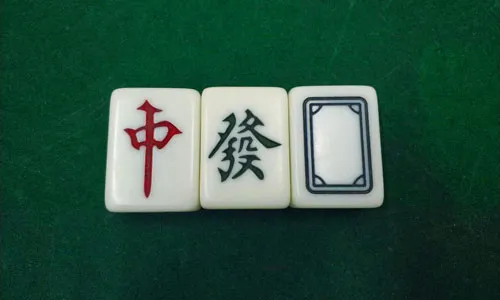
Throughout China's history, there were several games similar to modern mahjong. Xuan He Pai, a game that originated in the Song Dynasty (960-1279 CE), used wood and ivory cards similar to today's mahjong tiles. They look very similar to dominoes, with a total of 227 pips. There are 32 of these dominoes and are meant to be representations of star constellations.
Another game, Ma Diao, popular during the Ming Dynasty (1368-1644 CE), was a trick-taking game for four players, played with four-suited money cards. Three of the four Ma Diao suits resembles the three suits of mahjong. Coins correspond to circles; coin strings correspond to the bamboos; coin string myriads correspond to the characters. Many money card games evolved from ma diao and many variations of money card decks have come and gone. Three-suited money cards became favored (one of the four money suits was dropped), and in a development that surely led to Peng He Pai, a game that uses four sets of three-suited cards. In 1846, a Chen Yumen (courtesy name Chen Zhengyue) from Ningbo, created a mahjong game based on Peng He Pai. Instead of paper, he used bamboo and bone to make mahjong. The game soon spread to other cities in China as Ningbo was a business port city.
At the turn of the 20th century, the game spread beyond China's borders which led to variants on the traditional Chinese rules. The expatriate population of Shanghai picked up the game in the cafes that they frequented and brought it back to their home countries. In Japan, mahjong clubs formed in the early part of the century. In the 1920s, the British and Americans, also, started enjoying the game and as a result, the rules evolved.
In 1998, the State Sports Commission of China recognized mahjong as a 255th sport, and the Official International Rules for mahjong were released the same year.
Mahjong set of Tiles
Traditionally, a standard set has 144 tiles, but now most places in China use only 136 tiles omitting the 4 flowers and 4 seasons.
Circles (also known as Dots)
36 circle tiles in 4 identical sets of 9 tiles with one to nine circles engraved on them. In Chinese, they are the 筒子tǒngzi meaning 'barrel' or 'tube-shaped', named after circular coins (once used in China) with a hole in them. The circles are also known as 'dots'.

Bamboos (also known as Soks or Bams)
36 bamboo tiles in 4 identical sets of 9 tiles with one to nine bamboo stem engraved on them. Bamboo in Chinese is 竹zhú or else the 索子 'suǒzǐ suit' or 条 ‘tiáo suit’ or 'woven thread suit'. The '1' is usually a picture of a bird; often a sparrow 麻雀 máquè, by which the game is named in the south. The bamboo is also known as 'soks' or 'bams'.

Characters (also known as Wans or Craks)
36 Number tiles in 4 identical sets of 9 tiles with the characters for the numbers 1 to 9 engraved on them. The character for 万 wàn (more often in traditional form 萬) is underneath each Chinese number. They are also known as 'wans' or 'craks'.

Winds
There are 16 Wind tiles in 4 identical sets of 4 tiles for each of the four wind directions (east, south, west, and north). Collectively known as the 风牌 Fēngpái, they are always listed in this order: 东 (east) 南 (south) 西 (west) 北 (north).
Dragons
There are 12 Dragon tiles in 4 identical sets of 3 tiles: red; green and white dragons. Collectively they are also known as the 三元牌 Sān yuán pái three scholars, the change to 'dragons' may be a result of the export to America. In China, we just call them "zhongfabai". 红中 Hóngzhōng (traditional 紅中 ) red dragon or red center, 发财 fācái (traditional 發財 ) green dragon or green fortune, 白板 Bái bǎn blank or white dragon or the white board. The white dragon is often an empty frame.
 Winds and Dragons
Winds and Dragons
Chinese Mahjong rules
There are many versions of mahjong rules, but the main 4 are
- Chinese
- Hong Kong
- American
- Japanese
Here we focus on the Chinese mahjong rules, which are quite simple to follow:
- 4 players for a game.
- All 136 tiles are shuffled face down and 4 square walls are built with 34 tiles each.
- The turn order is determined by throwing the dices by the dealer and rotates anticlockwise.
- The dealer leads other players to draw 13 tiles in a clockwise direction around the wall.
- At the start of each turn, a player draws a tile or claims the discarded tile of the previous player.
- At the end of a turn, a player discards a tile from their hand.
- The discard can be claimed by other players to complete chows, pungs, or kungs.
- If no claims are made, the turn passes to the next player in anticlockwise order.
- A player wins once a winning hand of 4 sets and a pair is assembled.
- If no player wins when all walls are depleted, the round ends in a draw.
How to play Chinese Mahjong?
First of all, four players are required to start a game. And then you need to learn pung, chow, and kong, the three basic sets of tiles to call “mahjong”.
Pungs (Pongs)
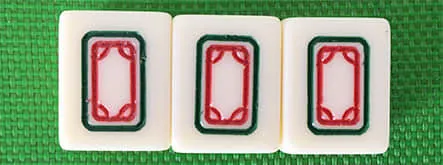
A pung or its other name pong is a set of three identical tiles. You can call pungs when any player discards a tile as long as you have 2 of the same tiles.
Chows
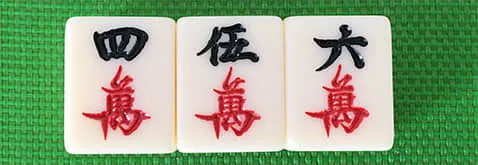
A chow is a combination of 3 tiles in a sequence that are suited. Unlike other combinations, an exposed chow may only be declared off the discard of the player on your left.
However, in some areas in China, the chow is not allowed.
Kongs

Some players also play with a "kong", which are four of the same tiles (like an extended pung). The same rules for claiming a discarded tile apply, but any player completing a kong immediately draws an extra tile before discarding.
The Objective
The goal of the game is to get mahjong, which consists of getting all 14 of your tiles into four sets and one pair. A pair is two identical tiles. A set can be either a pung, a chow, or kong. A single tile cannot be used in two sets at once.
 一,四 wans
一,四 wans
 四,七 wans
四,七 wans
Setup
Traditionally, the four wind tiles are shuffled face down and dealt to the players by throwing the dices. Players then sit according to their tile and sit clockwise in the order of “north, west, south, and east”. Every player will take turns to be the dealer. Sometimes, players may simply roll the dice to determine the dealer.
All tiles are shuffled together, and the players build a wall of 34 face-down tiles in front of themselves, 17 long, and two tiles high. The result should be a large square wall of tiles in the center of the table. Automatic mahjong tables are available in most mahjong parlors, so you don't need to build the wall tiles.
The dealer rolls the dice and counts the many tiles from the right edge of their wall, and separates the wall at that point to begin dealing tiles from the left of that spot, and going clockwise. Each player draws 13 tiles, with the dealer starting with an extra 14th tile. Each player then arranges their tiles facing towards them so they can see and other players cannot. The dealer then discards one tile, and play begins to the right of the dealer.
The Play
After each discard, any player who has 2 or 3 matching tiles takes the next turn by calling mahjong, pung, or kong. The priority goes to any player who can claim the discarded tile to complete the mahjong. A player who can do this claims the tile, then reveals the winning hand of 14 tiles.
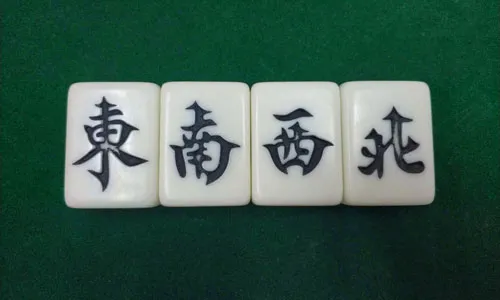
Failing that, any player can claim the discarded tile to complete a pung. The player says "pung", and then reveals the two matching tiles that match the discard. For example, if the discarded tile is the 7 of bamboo, and the player has two more bamboo 7s in hand, that player would call "pung". When calling pung, the player turns the completed pung (with all three bamboo 7s, in this case) face-up on the table, discards a useless tile, and the turn passes to the right.
If nobody claims the discarded tile but it completes a chow for you, you may claim it at the beginning of your turn by saying "chow". You then must turn your chow face-up, revealing the completed run (e.g. 5, 6, 7 of bamboo) as in the pung example above. You then discard a tile and play continues as normal.
If the discard does not complete a set for you, then on your turn you draw the next tile from the open end of the wall. Unless this gives you mahjong, you then discard a tile face-up. Note that only the most recently discarded tile can be claimed.
Game End
Players play to a pre-determined number of points, rounds or hours, or until players agree that they are done.
Special Hands
The special hands are alternative target sets of tiles that a player can go mahjong with.
1. Thirteen Orphans (十三么)
It is a limit hand that consists of each of the 4 wind tiles, each of the 3 dragon tiles, and a 1 and a 9 from each of the 3 different suits: circle, bamboo, and characters. The fourteenth tile can be any tile listed above to make a pair. All tiles must be self-drawn except for the last one.

2. Pure One Suit (清一色)
It means you can win with all 14 of the same letter suit of circles, bamboos, or characters. Pung, chow, and kong sets are all allowed.

3. Big Three Dragons (大三元)
It requires your hand to have pungs or kongs of all the dragons (ZHONG, FA, BAI) and the rest are other sets (pung, kong, chow).

4.Big Four Winds (大四喜)
It requires your hand to consist of 4 pungs or kongs of wind set and a pair of others.

Watch the video to learn How to play Mahjong
Mahjong Museums
Museum of Mahjong and Tea Culture in Chengdu
Located in the city center of Chengdu, the city is the matrix for the Chinese mahjong culture. More than any other place in China, the people of Chengdu play the game in tea houses, hence the museum combines the game of mahjong with tea culture. You can find different mahjong tiles which are made of different materials.
The Display Hall of the Birthplace of Mahjong
Located in Ningbo in eastern China, it is part of Tianyi Pavillion (the oldest extant library in China). The museum houses mahjong sets from countries like Vietnam, Japan, and the US. The building of the museum is the ancestral hall of Chen Yumen, who was thought to be the inventor of mahjong.
When do we play Mahjong?
Generally speaking, Chinese people play mahjong anytime when they are free or not working. Played at all festivals and other gatherings, mahjong has become a symbol of friendship and family bonds. For gatherings, they usually play mahjong before and after each meal. It is not uncommon to play the whole night during the holidays. As one of the most popular pastimes, many people play it after work or during holidays.
Retirees can be seen playing it every day.
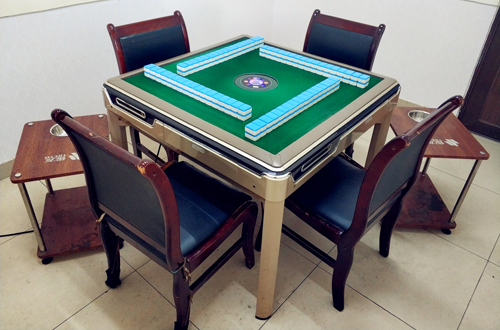
Where do we play Mahjong?
Mahjong enthusiasts play anywhere from swimming pools to the market place. You can find mahjong parlors almost in any city in China, where people would play with friends or strangers to kill time. At home, many people will buy an automatic mahjong table and play it with friends during gatherings. They may also go to mahjong parlors of different levels: cheap one charge only 10 yuan (US$1.5) per hour with very basic facilities, while expensive ones (may charge up to US$150 per hour) providing food and an air-conditioned private room. Many restaurants and some hotels provide tables and mahjong sets to customers who host weddings or birthday banquets.
Where to buy a Mahjong set?
You can easily buy a set online, but if you want to buy a set as a souvenir during your trip. We recommend the following places:
In Beijing, we recommend the Panjiayuan flea market. It is the most popular antique market in China. All the shops are open 365 days of the year with roadside stands open every weekend. Every Saturday and Sunday the number of customers could reach sixty to seventy thousand.
In Shanghai, we recommend Yuyuan Bazaar, it is just outside the Yuyuan garden. You can find a lot of souvenirs here.
In Hong Kong, there is a shop that sells hand-carved mahjong tiles. The shop owner Mr. Cheung Shun-king learned this skill from his father 50 years ago. A set of his tiles sells for at least US$400, nearly tenfold the price of factory-made tiles. That's why the business is not very good. Most of his customers are collectors of mahjong. BiuKee Mahjong address: 235 Temple Street, Jordan Hong Kong.
Free online Mahjong Games and recommended Mahjong Apps
The recommend mahjong apps are:
- Stacker Mahjong 3D (Android and iOS)
- Mahjong Gold (Android and iOS)
- Mahjong Mystery: Escape the Spooky Mansion (Android)
- Mahjong Solitaire Titans (Android and iOS)
For free online mahjong games, we recommend the following two:
- http://freeonlinemahjonggames.net/
- https://www.arkadium.com/free-online-games/mahjong/

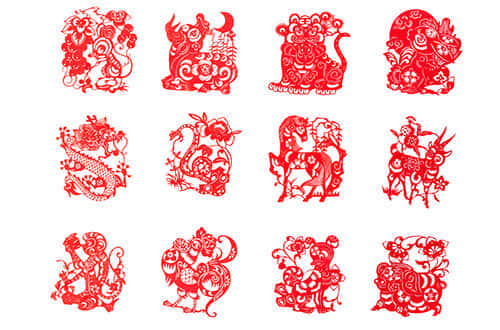 Chinese Zodiac
Chinese Zodiac 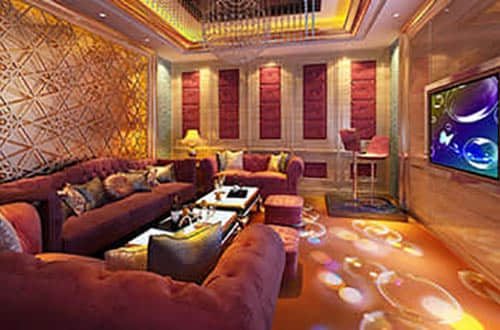 KTV in China
KTV in China 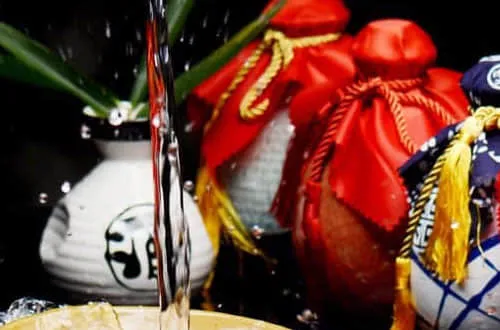 Baijiu Facts
Baijiu Facts 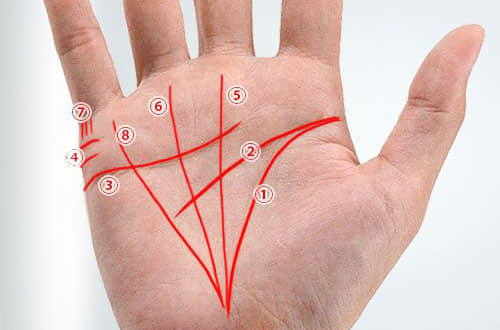 Palmistry - An Essential Guide
Palmistry - An Essential Guide